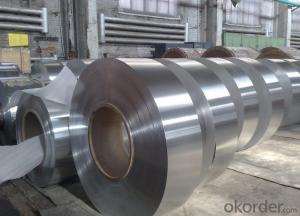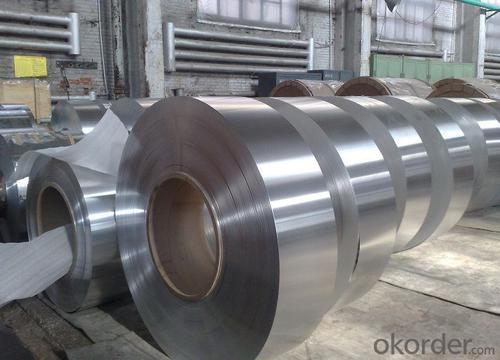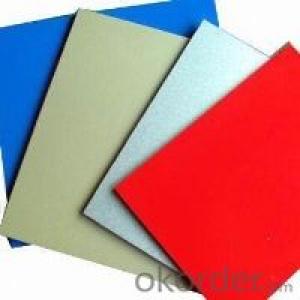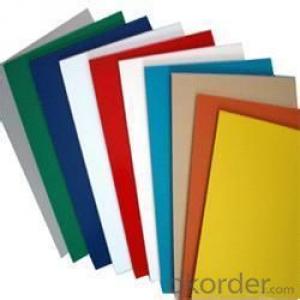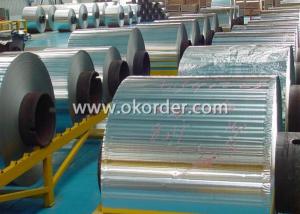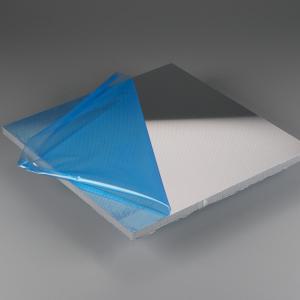3 8 1100 Aluminum Sheets for Color Coated Making and Prepainting
- Loading Port:
- Shanghai
- Payment Terms:
- TT OR LC
- Min Order Qty:
- 5 m.t.
- Supply Capability:
- 1000 m.t./month
OKorder Service Pledge
OKorder Financial Service
You Might Also Like
Specification
Structure of Aluminium Coil for Color Coated Making and Prepainting Description:
Coated aluminum coil/sheet are of a wide range of colors, which gives wonderful appearance no matter in residential and commercial constructions of great exhibition centers.
The coated aluminum coil/sheet have been widely used in the fields of construction and decoration( garage doors, ceiling etc.), electronic appliances, lighting decoration, air-condition air pipes, sandwich panels and drainages etc.
Main Features of the Aluminium Coil for Color Coated Making and Prepainting:
1) High flexibility
2) Impact resistance
3) Excellent weather-proof durability
4) Anti-ultraviolet
5) High erosion resist
Images of the Aluminium Coil for Color Coated Making and Prepainting:
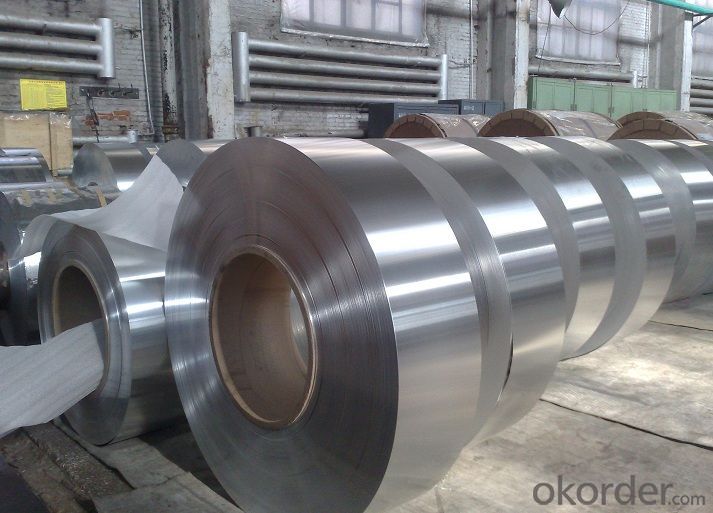
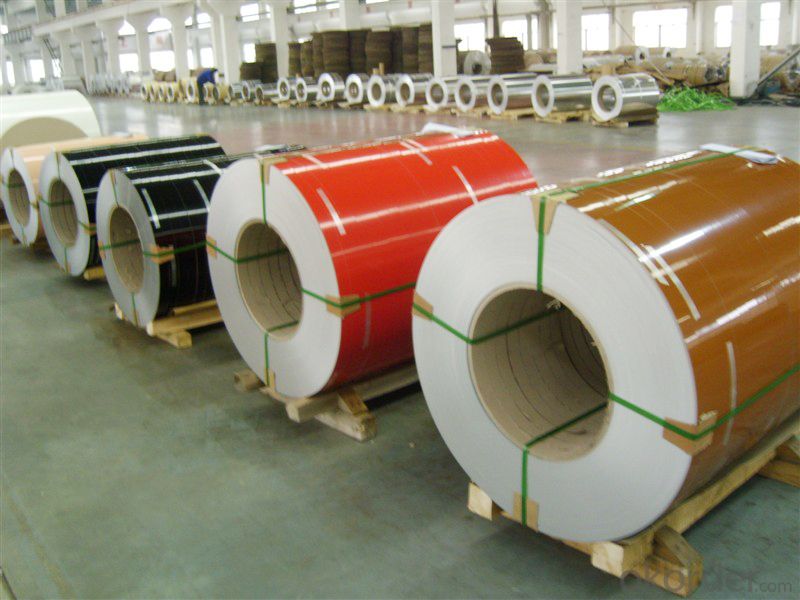
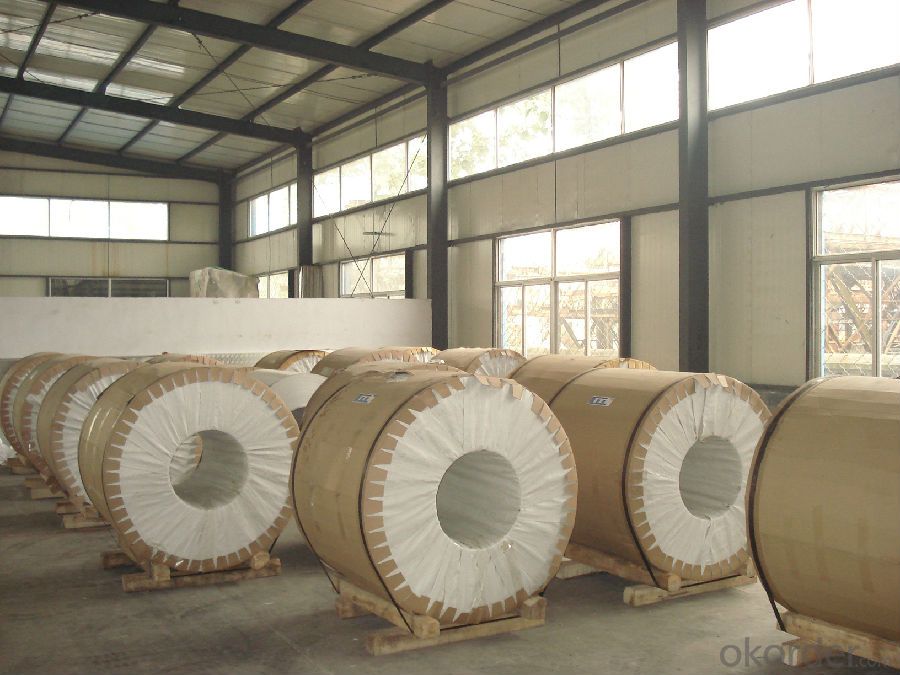
Aluminium Coil for Color Coated Making and Prepainting Specification:
Alloy | A1100,A3003,A1050,A8011 etc |
Temper | H16,H18,H24 |
Thickness | From 0.024mm to 1.2mm |
Width | Standard width:1240mm |
Special width:1300mm,1520mm,1570mm,1595mm | |
Diameter | Standard dia:1200mm |
Interior dia:150mm,405mm,505mm | |
Weight | 2.5 T/coil,3.0 T/coil |
Coating | PE, PVDF, AC |
Surface | Embossed, mill finish, coated |
Color | AS to code RAL |
Gloss | 10-90%(EN ISO-2813:1994) |
Coating Thickness | PE: more than 18 micron |
PVDF: more than 25 micron | |
Coating Hardness (pencil resistance) | More than 2h |
Coating adhesion | 5J(EN ISO-2409:1994) |
Impact Resistance | No peeling or cracking(50 kg/cm,ASTMD-2794:1993) |
Flexibility (T-bend) | 2T |
MEK resistance | More than 100 |
FAQ :
a.What is monthly capacity
---CNBM is one stated own company and our monthly capacity is about 2000tons.
b. Now which countries do you export your goods?
---Now we export to South East Asia,Africa, North America,South America ect.
- Q: Are aluminum sheets suitable for wastewater treatment applications?
- Indeed, aluminum sheets prove to be suitable for wastewater treatment applications. With its versatility, aluminum presents several advantages when utilized in wastewater treatment processes. Firstly, aluminum sheets exhibit a high resistance to corrosion, a crucial feature given the harsh and corrosive environment of wastewater treatment plants. This resistance ensures that the aluminum sheets remain intact and unaffected by the chemicals present in the wastewater, thereby preserving their structural integrity. Moreover, aluminum sheets possess exceptional thermal conductivity properties, enabling efficient heat transfer in processes such as wastewater disinfection. This thermal conductivity facilitates the effective elimination of harmful bacteria and contaminants from the wastewater, thereby enhancing the overall treatment process. Furthermore, aluminum sheets are not only lightweight but also durable, making them easy to handle and install in wastewater treatment systems. This characteristic also contributes to their cost-effectiveness, as they require less maintenance and are less susceptible to damage compared to alternative materials. Additionally, aluminum is a sustainable material that can be recycled, thus reducing the environmental impact of wastewater treatment applications. Recycling aluminum sheets aids in the conservation of natural resources and minimizes energy consumption, making it an environmentally friendly choice. In conclusion, aluminum sheets offer a multitude of advantages for wastewater treatment applications. Their corrosion resistance, thermal conductivity, lightweight nature, and recyclability render them a suitable and efficient material for use in wastewater treatment processes.
- Q: Can aluminum sheets be polished?
- Yes, aluminum sheets can be polished. Polishing aluminum sheets involves smoothing the surface and creating a reflective finish using abrasive materials or polishing compounds.
- Q: Explain the distinction between aluminum sheets based on their thickness.
- <p>Aluminum sheets with different thicknesses primarily differ in their strength, weight, and applications. Thicker sheets offer greater strength and rigidity, making them suitable for structural applications or heavy-duty uses. In contrast, thinner sheets are lighter and more flexible, ideal for applications requiring formability or where weight is a concern, such as in the automotive or aerospace industries. The choice of thickness depends on the specific requirements of the project, including load-bearing needs, durability, and aesthetic considerations.</p>
- Q: what is better for my 96 mustang gt. porting and polishing my stock heads or getting aluminum heads. also could i do a 3v conversion?
- Aluminum. They reduce weight and reduce heat!
- Q: Are the aluminum sheets suitable for manufacturing solar reflectors?
- Yes, aluminum sheets are suitable for manufacturing solar reflectors due to their high reflectivity, lightweight nature, and durability in outdoor conditions.
- Q: What are the different methods of surface etching for aluminum sheets?
- There are several methods of surface etching for aluminum sheets, each with its own advantages and applications. Some of the most common methods include: 1. Chemical etching: This method involves using a chemical solution to selectively remove a thin layer of aluminum from the surface. The solution typically contains acids or alkaline substances that dissolve the metal, creating a textured or patterned surface. Chemical etching is precise and can achieve intricate designs, making it ideal for decorative or aesthetic purposes. 2. Mechanical etching: Also known as abrasive blasting or sanding, mechanical etching involves using abrasive materials such as sandpaper or wire brushes to physically remove the top layer of aluminum. This method is relatively simple and can be done manually or with the help of machinery. Mechanical etching is commonly used to create a uniform matte finish or to prepare the surface for further treatments, such as painting or coating. 3. Electrochemical etching: This method utilizes an electrical current to selectively dissolve the aluminum surface. The aluminum sheet is immersed in an electrolyte solution, and a direct current is applied through a stencil or mask to create the desired pattern. Electrochemical etching is commonly used for marking or labeling purposes on aluminum sheets, as it can produce clear, permanent, and highly precise designs. 4. Laser etching: Laser etching involves using a high-powered laser to remove the top layer of aluminum, creating a permanent and precise pattern on the surface. This method is highly accurate and can achieve intricate designs with sharp edges. Laser etching is commonly used for industrial applications, such as marking serial numbers, logos, or barcodes on aluminum sheets. 5. Photochemical etching: This method involves using a photosensitive material, known as a photoresist, to create a pattern on the aluminum surface. The aluminum sheet is coated with the photoresist, exposed to UV light through a stencil or mask, and then developed to remove the unexposed areas. The exposed aluminum is then etched away using a chemical solution. Photochemical etching is commonly used for producing high-resolution designs or microstructures on aluminum sheets. Each of these methods has its own advantages, depending on the desired outcome and application. It is important to consider factors such as precision, speed, cost, and complexity when choosing the appropriate surface etching method for aluminum sheets.
- Q: What is the typical fatigue strength of aluminum sheets?
- Aluminum sheets have the potential to vary in their typical fatigue strength due to factors such as alloy composition, thickness, manufacturing process, and surface treatment. However, when compared to other materials, aluminum sheets generally exhibit a relatively high fatigue strength. Aluminum alloys, particularly those utilized in aerospace and automotive applications, are renowned for their exceptional resistance to fatigue. The fatigue strength of aluminum sheets is commonly measured in terms of the stress level (in MPa) at which failure occurs after a specific number of cycles. For aluminum alloys commonly employed in structural applications, fatigue strength typically falls within the range of approximately 70 MPa to 150 MPa, contingent upon the specific alloy and thickness. It is important to acknowledge, however, that this range is not absolute and can exhibit significant variations based on the aforementioned factors. It is noteworthy that the fatigue strength of aluminum sheets can be considerably enhanced through various techniques such as heat treatment, alloying, and surface treatments like shot peening or anodizing. These processes have the ability to augment the fatigue life and enhance the overall performance of aluminum sheets under cyclic loading conditions. In conclusion, while the typical fatigue strength of aluminum sheets can be considered relatively high compared to other materials, it is subject to variation due to several factors. Optimal material selection, in conjunction with appropriate processing and surface treatments, can result in significant improvements to the fatigue performance of aluminum sheets.
- Q: This question asks about the ability of aluminum sheets to withstand weather conditions without deteriorating.
- <p>Aluminum sheets have excellent weathering resistance. They are highly resistant to corrosion and oxidation, which makes them suitable for outdoor applications. Aluminum forms a protective oxide layer when exposed to air, which prevents further corrosion. This property allows aluminum sheets to maintain their appearance and structural integrity over time, even in harsh weather conditions. Additionally, aluminum can be coated or anodized to further enhance its resistance to weathering.</p>
- Q: This question asks for criteria or factors to consider when selecting a high-quality aluminum sheet.
- <p>To choose a quality aluminum sheet, consider the following factors: 1) Thickness and weight, which should meet your specific project requirements. 2) Surface finish, ensuring it's smooth and free from defects. 3) Purity and alloy type, as different alloys have different properties. 4) Certifications, ensuring the sheet meets industry standards. 5) Supplier reputation and customer reviews for reliability. 6) Price, ensuring it's reasonable for the quality. 7) Conductivity and strength, depending on your application. 8) Corrosion resistance, important for longevity. Always inspect the sheet for any visible defects and ensure it's from a reputable supplier.</p>
- Q: Can aluminum sheets be used for roofing applications?
- Yes, aluminum sheets can be used for roofing applications. Aluminum is a lightweight and durable material that offers excellent resistance to corrosion. It is particularly suitable for areas with high humidity or coastal regions where saltwater exposure is common. Aluminum roofing sheets are known for their longevity and low maintenance requirements. They are also fire-resistant and can withstand extreme weather conditions, making them a popular choice for both residential and commercial roofing projects. Additionally, aluminum sheets are easy to install and can be shaped and formed to fit various roof designs. Furthermore, aluminum is a sustainable material as it can be recycled repeatedly without losing its quality, making it an environmentally friendly option for roofing applications.
Send your message to us
3 8 1100 Aluminum Sheets for Color Coated Making and Prepainting
- Loading Port:
- Shanghai
- Payment Terms:
- TT OR LC
- Min Order Qty:
- 5 m.t.
- Supply Capability:
- 1000 m.t./month
OKorder Service Pledge
OKorder Financial Service
Similar products
Hot products
Hot Searches
Related keywords
